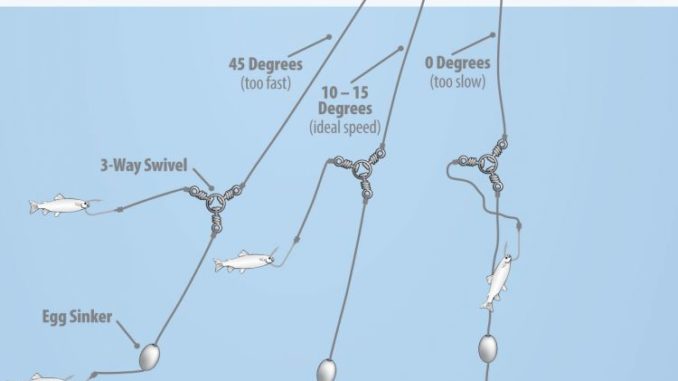
Like spider-rigging, having success in long-line trolling takes dedication in order to get a system that works for your boat and your setup. Try these seven tips will help you become a better long liner.
• Don’t stop. Unlike tight-lining, in long-lining, the speed of the boat determines the depth of the baits/lures. Stopping over underwater cover too long will cause you to lose your religion when every line hangs up at once.
• Work from the rod holder. Multiple hook-ups, snags and crossed lines will often occur at once. Work each rod individually, then put it back in the holder.
• Avoid straight lines. Trolling in straight lines will catch super aggressive fish but a better approach is to zig-zag. During a turn, inside baits will drop and outside baits will rise, often helping you to zero in on the depth the fish are holding.
• Stay in your lane. When reeling a fish in, get it to the surface and bring in into the appropriate “lane” to prevent it from crossing lines to avoid tangles.
• Look for bait, not fish. Crappie may suspend just below the surface and not show up on sonar when checking out an area to troll. The presence of bait, preferably in small pods or schools rather than thick layers, will indicate that predator fish are down there stirring things up.
• Keep track of colors. Start with eight to 10 different colors and keep track of which rod sports which color by hanging a duplicate jig/skirt on that rod holder. As the day progresses, a color pattern will emerge.
• Use a net. The pressure of being “towed” behind the boat will wallow out hook holes in the fish’s mouth. Slide a long-handled net under the fish, especially bigger ones, before taking the pressure off at the surface.


